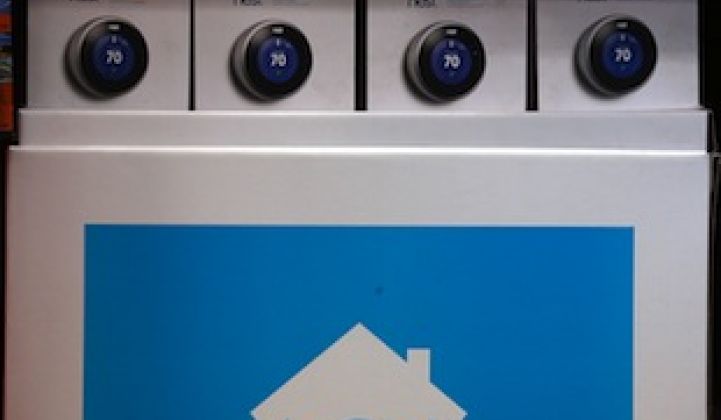The changing utility business model in the face of distributed generation market acceptance is a major theme so far in 2014, and Google’s Nest acquisition is a clear signpost on this transitional landscape. It’s becoming increasingly clear that to lead the way in the new power generation and delivery space, utilities need to decide whether they want to step out of their comfort zones -- or fight to maintain the status quo.
“The fundamental decision for utilities is whether they should become a consumer-centric business, or stick to...managing generation, transportation and distribution as a commodity supplier,” said Tendril CEO Adrian Tuck.
A utility industry expert consultant once told me that in the changing utility world, “he who controls the customer’s load will be king.” If it wasn’t clear at the time, Google’s Nest acquisition crystallized that comment into reality.
And it seems Tuck would agree, as he said there are two ways to spin the narrative around the high-profile deal: It’s all about controlling users’ in-home operations, but there is a hefty energy component as well.
“A few fairly sizable syndicates are forming. Over the next eighteen months, I expect to see syndicates form around energy delivery into the home, based on conversations we’re having. It won’t all happen overnight, but expect the industry to bifurcate into traditional utilities and more service-focused companies,” said Tuck.
Solar companies partnering with storage and device makers is one example of the new partnerships Tuck sees forming. The lines between power delivery, in-home services and energy efficiency are increasingly blurring.
“The Comcasts and ADTs of the world are looking at ways to bundle energy services into the market and reduce the forward-facing role of utilities in those transactions.” If you buy a Tesla and plug into their super-charger network, it takes the utility out of the picture because the customer is now essentially getting power from Tesla, explained Tuck.
“The trend is to nudge people to buy things differently, the way Apple changed the way people buy music, which reduced the role of music companies. These are the sort of syndicates that we at Tendril are involved in,” he said.
Net metering -- or selling solar-generated power back to the utility -- is shaping up to be a major renewable energy issue this year. Tuck says his company is working on the net metering issue from both the utility and solar company perspectives. The more utilities fight solar, the more likely it is that new technologies come in and decrease their role, he said.
“My advice to utilities is no one is better placed in the market to sell solar than you, so get on board.”
He likened the situation -- as many do -- to the telecom disruption of decades past. Landline providers tried to fight mobile phones by saying they were uneconomic and unreliable, but costs came down and reliability steadily improved as networks were built out. “We are in the same phase now with utilities. People didn’t cut the cord with telecoms; they just stopped using the service. It’s the same with solar, people don’t get off the grid; they just stop using it.”
“Utilities need to start selling solar as a bundle,” Tuck continued. “The trap is they think they can do centralized solar without getting into the distributed portion, but people want panels on their homes as a badge of greenness. A similar thing happened with the Toyota Prius vs. the Honda Civic hybrid. Prius sold because people wanted to be seen in a green hybrid car, whereas the Civic hybrid looked like the other Civics, with the only distinction being a label on the back of the car.”
The way Tuck describes the situation, it’s not really bad news for utilities, so much as the need for them to take some risks to seize new opportunities. “One [beautiful thing about] the U.S. is when people see opportunity, they jump on it. And the gap in services on utilities' behalf is such an opportunity.”
“My critical point is, decide whether you want to compete in this world and do it -- because it’s doable.”
***
Editor's note: This article is reposted from Breaking Energy. Author credit goes to Jared Anderson.



